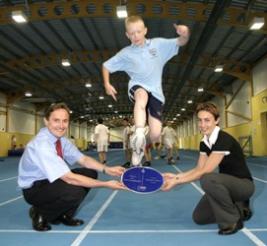The Big Lottery Fund is inviting tenders for a multi-million-pound funding management system that will enable it to significantly increase the volume of applications that it receives and processes online.
Gerald Oppenheim, BIG’s outgoing director of policy and partnerships, said the funder hoped to implement the new software over the next couple of years.
At present, most applications to BIG are still submitted by pen and paper, and even those that are submitted online have to be completed in a PDF format where the applicant continually has to save their work. “It’s not a 21st century application process and that’s not something we are comfortable with,” Oppenheim said.
After undertaking an in-depth market analysis, BIG appointed SAP-UK to develop a “business blueprint” defining how its Funding Management System could be delivered. The new system is expected to provide a “scalable and flexible platform to support future business change for between ten and 15 years, for a user community of 1,000 and online customer access for up to 30,000 customers”.
The new tender is to build this new Funding Management System in line with the business blueprint document, and to provide support and maintenance to BIG’s internal support service for 18 months after it goes live.
The budget for the contract is between £3m and £10m including VAT, subject to approval by the government, and the contract is for approximately 12 months.
Oppenheim added that BIG hoped the system would be robust and flexible enough for other grantmakers, public and voluntary sector, to buy into it as well. “We’re doing it as BIG but the idea has always been to open it up to others.”
But he dismissed suggestions that applicants would be forced to apply online in order to have any chance of winning grants. “I think there will be a declining number of people who will want to do hard copy. Of course there will be applicants who don’t have access to systems and we’ll have to be a bit flexible about it, but our hope is that over time more and more will apply online, because it’s a more effective way of doing it and it saves everybody costs.”









